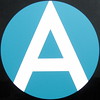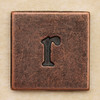Coming Soon: Gyotaku - Japanese Fish Printing
Self Poraits in Pencil









NW Coast Native American Art





Drawing from Observation: Blenders and Irons
Japanese Tree Paintings - with Haiku poems:
We created these trees by blowing the paint on our papers around with straws.
Learn more about Japan here.
Kandinsky Sqaures:
Wassily Kandinksy is a famous Russian artist that lived in the late 1880's. For Kandinsky, art and music were always connected. He claimed that he would see colors when he heard music. He did a lot of art experiments with color and how they interact and make us feel. We did a similar experiment. We had 12 squares to fill on our papers with repeating concentric shapes. Three of the squares had to have warm, cool or neutral colors, complementary colors and analogous colors. They other squares could have any color combinations we invented and we came up with a name for each of these combinations.
For more fun with Kandinsky, visit the section of the National Gallery of Art website.
Analogous Colors
Analogous colors are any three colors which are side by side on a 12 part color wheel, such as yellow-green, yellow, and yellow-orange.
Complementary Colors
Complementary colors are any two colors which are directly opposite each other, such as red and green and red-purple and yellow-green. Complementary colors look brighter when placed next to each other.
warm colors
cool colors
PAPER WEAVING:
We painted two papers with watercolors. Then we cut vertical strips on one paper and horizontal strips on the other. Then we wove the horizontal strips over and under the vertical strips.
We learned about the artist Deborah Butterfield. She creates sculptures of horses made from sticks, mud, scrap metal etc. We created drawings of horses that we "built" by tracing different shapes. We mixed our colors in every area where the shapes overlapped.




































